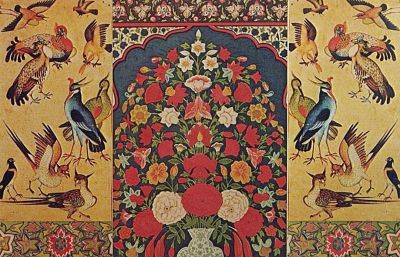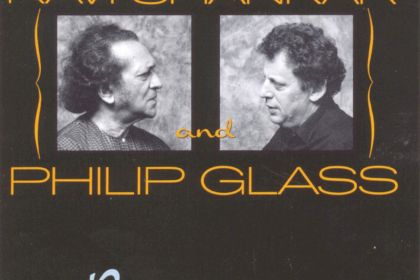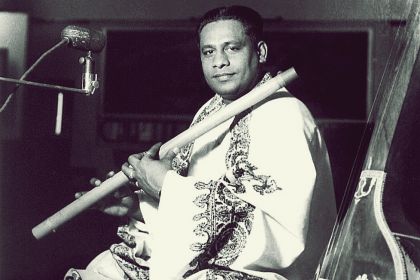SITAR
The first-ever concerto for sitar and Western orchestra was dedicated to glorious music teacher Allauddin Khan by his most successful pupil

Concerto for Sitar & Orchestra
Gharana: Maihar
Released in 1971, Concerto for Sitar & Orchestra was the first-ever recording to feature Indian classical music in a rich arrangement of a Western symphony orchestra. The concerto was written by Ravi Shankar who essentially became the main ambassador of Indian culture in Europe and the US, having left a tremendous impact on several generations of prominent classical and popular musicians including Philip Glass, George Harrison, and John Coltrane.
During the 1960s, Ravi Shankar was not completely satisfied with the situation of the Indian classic, though having gained a lot of listeners thanks to his many concerts at rock festivals, not being perceived as anything more than an exotic quirk that contributed to the expansion of consciousness. In this regard, the famous sitarist especially appreciated his chamber music works with the outstanding violinist Yehudi Menuhin that would become the starting point of his European collaborations, including the famous Concerto for Sitar & Orchestra recorded at Abbey Road Studios with London Symphony Orchestra led by André Previn.
Based on classical ragas, the four-movement sitar concerto was dedicated to Allauddin Khan, the greatest teacher in the history of Indian music who by the time of release had reached the age of 109. Reportedly, Allauddin Khan himself immensely admired classical European harmony and often gathered his pupils to listen to broadcasts of Western classics on All-India Radio, saying:
"Just listen to this music, how much they have perfected a note! Each note correct and so much in tune!"
Immediately after the issue, Concerto for Sitar & Orchestra aroused great interest among classical music listeners and, according to Capitol Records, it had "sold like a pop record".
The first movement of the sitar concerto features the orchestration of Khamaj raga which is considered to be a romantic one and is generally performed at midnight to fully explore the beauty of its melody. Khamaj raga belongs to the Khamaj thaat—Hindustani classical music scale—equivalented to one of the standard major modes in Western classical: the Mixolydian scale.
Listen to Concerto for Sitar & Orchestra - First movement - Raga Khamaj performed by Ravi Shankar and André Previn with London Symphony Orchestra:
It is interesting that in his concerto Ravi Shankar realized rhythmic patterns with the help of bongos which quite successfully imitate the tabla drums commonly used in Indian music. Most likely the bongos were chosen as a louder and more suitable instrument for the Western orchestra.
A rather short second movement features Sindhu Bhairavi raga which, according to legend, has the energy that could melt mountains. Sindhu Bhairavi raga is mostly performed in Asavari thaat identical to the natural minor of Western classical theory.
Listen to Concerto for Sitar & Orchestra - Second movement - Raga Sindhi Bhairavi performed by Ravi Shankar and André Previn with London Symphony Orchestra:
The shortest third movement lasts a little over three minutes and is also associated with a natural minor scale since Adana raga presented here is performed in the aforementioned Asavari thaat.
Listen to Concerto for Sitar & Orchestra - Third movement - Raga Adana performed by Ravi Shankar and André Previn with London Symphony Orchestra:
In the longest fourth movement, Ravi Shankar introduces Raga Manj that develops in Khamaj thaat which brings listeners back to the Mixolydian major scale established in the first movement.
Listen to Concerto for Sitar & Orchestra - Fourth movement - Raga Manj performed by Ravi Shankar and André Previn with London Symphony Orchestra:
It should be noted that the score almost does not contain the polyphonic structures constantly used in Western music that are alien to the Indian classics that develop melodically against the background of rhythmic patterns and drone sound, providing a constant tonic note. In Western theory, this technique is called an organ point. The main composing methods in Ravi Shankar's concert are the repetition and imitation of a sitar melody provided by the symphony orchestra in different octaves as well as the creation of a drone sound by various groups of strings, brass, and woodwinds.



